 Invasive species are a serious threat in Florida. Invasive species are defined as non-native or exotic organisms, which cause ecological or economic harm or negatively affect human health in a new environment where they are not historically found. This 5-page fact sheet summarizes Florida residents’ perceptions, concerns, and knowledge about invasive species. This information will equip Extension faculty to more effectively communicate and educate clientele on this topic. Written by Nicole M. W. Dodds, Mary Hannah Miller, and Alexa J. Lamm, and published by the UF Department of Agricultural Education and Communication, October 2014.
Invasive species are a serious threat in Florida. Invasive species are defined as non-native or exotic organisms, which cause ecological or economic harm or negatively affect human health in a new environment where they are not historically found. This 5-page fact sheet summarizes Florida residents’ perceptions, concerns, and knowledge about invasive species. This information will equip Extension faculty to more effectively communicate and educate clientele on this topic. Written by Nicole M. W. Dodds, Mary Hannah Miller, and Alexa J. Lamm, and published by the UF Department of Agricultural Education and Communication, October 2014.
http://edis.ifas.ufl.edu/wc186
Tag: Agricultural Education and Communication Department
Floridians' Perceptions of Endangered Species
 In July 2014, the UF/IFAS Center for Public Issues Education in Agriculture and Natural Resources (PIE Center) initiated a study to explore the attitudes, perceptions, opinions, and knowledge of Floridians on endangered and invasive species. The majority of respondents to the survey have favorable views of endangered species but few consider themselves knowledgeable on the issue. This 4-page fact sheet can equip Extension faculty to more effectively communicate with and educate clientele about endangered species. Written by Mary Hannah Miller, Nicole M.W. Dodds, & Alexa J. Lamm, and published by the UF Department of Agricultural Education and Communication, October 2014.
In July 2014, the UF/IFAS Center for Public Issues Education in Agriculture and Natural Resources (PIE Center) initiated a study to explore the attitudes, perceptions, opinions, and knowledge of Floridians on endangered and invasive species. The majority of respondents to the survey have favorable views of endangered species but few consider themselves knowledgeable on the issue. This 4-page fact sheet can equip Extension faculty to more effectively communicate with and educate clientele about endangered species. Written by Mary Hannah Miller, Nicole M.W. Dodds, & Alexa J. Lamm, and published by the UF Department of Agricultural Education and Communication, October 2014.
http://edis.ifas.ufl.edu/wc185
Extension Professionals: Anticipating and Solving Common Challenges in Planning and Delivering Educational Programs
 The work of an Extension agent demands much more than just subject knowledge. An Extension career is exciting because no two days are the same. With that comes a variety of unexpected challenges. The delivery of programs to diverse clienteles is, in itself, a skill and something that Extension agents improve over time. This article summarizes some common problems associated with delivering Extension programs and to recommend solutions. This 5-page fact sheet was written by Laura A. Warner and Kathryn A. Stofer, and published by the UF Department of Agricultural Education and Communication, September 2014.
The work of an Extension agent demands much more than just subject knowledge. An Extension career is exciting because no two days are the same. With that comes a variety of unexpected challenges. The delivery of programs to diverse clienteles is, in itself, a skill and something that Extension agents improve over time. This article summarizes some common problems associated with delivering Extension programs and to recommend solutions. This 5-page fact sheet was written by Laura A. Warner and Kathryn A. Stofer, and published by the UF Department of Agricultural Education and Communication, September 2014.
http://edis.ifas.ufl.edu/wc178
Increasing Efficiency in Extension Using the Train-the-Trainer Approach
 Extension has adapted to today’s financial realities through a number of strategies, including increased reliance on partnerships. One strategy that expands the reach of an Extension agent and capitalizes on partners is the “train-the-trainer” approach.This 4-page fact sheet describes the train-the-trainer approach as it applies to Extension programming, provides contextual examples from within and beyond UF/IFAS Extension, and offers best management practices. Written by Laura A. Warner, Amy Harder, Tom Wichman, and Frank Dowdle, and published by the UF Department of Agricultural Education and Communication, September 2014.
Extension has adapted to today’s financial realities through a number of strategies, including increased reliance on partnerships. One strategy that expands the reach of an Extension agent and capitalizes on partners is the “train-the-trainer” approach.This 4-page fact sheet describes the train-the-trainer approach as it applies to Extension programming, provides contextual examples from within and beyond UF/IFAS Extension, and offers best management practices. Written by Laura A. Warner, Amy Harder, Tom Wichman, and Frank Dowdle, and published by the UF Department of Agricultural Education and Communication, September 2014.
http://edis.ifas.ufl.edu/wc170
Engaging Consumers in At-Home Water Conservation: A Guide for Extension
 With a growing urban population and increased demands on water for recreational and agricultural purposes, Florida will have to identify a solution to its water quality and quantity issues. Although all Florida residents will play a part in conserving water in the future, the ability of Extension faculty to work with consumers and encourage new water conservation behaviors at home will be vital. This 4-page fact sheet provides information to Extension faculty about the water conservation behaviors in which Florida residents currently engage, water conservation product ownership, and public interest in water-related topics. Written by Caroline G. Roper and Alexa J. Lamm, and published by the UF Department of Agricultural Education and Communication, September 2014.
With a growing urban population and increased demands on water for recreational and agricultural purposes, Florida will have to identify a solution to its water quality and quantity issues. Although all Florida residents will play a part in conserving water in the future, the ability of Extension faculty to work with consumers and encourage new water conservation behaviors at home will be vital. This 4-page fact sheet provides information to Extension faculty about the water conservation behaviors in which Florida residents currently engage, water conservation product ownership, and public interest in water-related topics. Written by Caroline G. Roper and Alexa J. Lamm, and published by the UF Department of Agricultural Education and Communication, September 2014.
http://edis.ifas.ufl.edu/wc169
Attribution Theory: How is it Used?
 Attribution theory is defined as the way that individuals envision the success or failure of their own behavior or the behavior of others. This 4-page fact sheet explains how instructors, whether formal or informal, can use this theory in their learning environment to enhance their learners’ knowledge and comprehension. Written by Eric D. Rubenstein and Andrew C. Thoron, and published by the UF Department of Agricultural Education and Communication, September 2014.
Attribution theory is defined as the way that individuals envision the success or failure of their own behavior or the behavior of others. This 4-page fact sheet explains how instructors, whether formal or informal, can use this theory in their learning environment to enhance their learners’ knowledge and comprehension. Written by Eric D. Rubenstein and Andrew C. Thoron, and published by the UF Department of Agricultural Education and Communication, September 2014.
http://edis.ifas.ufl.edu/wc162
Adaptation Approaches to Sea-Level Rise in Florida
 There is consensus among the scientific community that climate change is occurring and will have far-reaching effects on our global ecosystems and human systems. In Florida, adaptation to climate change is occurring in both natural and human systems. As coastal communities prepare for sea-level rise, they can use several strategies to integrate natural adaptation processes into their planning processes. By taking a proactive approach to adaptation rather than a reactive one, communities will be able to better protect the resources upon which they depend. This 4-page fact sheet was written by Ondine Wells, Whitney Gray, and Paul Monaghan, and published by the UF Department of Agricultural Education and Communication, July 2014.
There is consensus among the scientific community that climate change is occurring and will have far-reaching effects on our global ecosystems and human systems. In Florida, adaptation to climate change is occurring in both natural and human systems. As coastal communities prepare for sea-level rise, they can use several strategies to integrate natural adaptation processes into their planning processes. By taking a proactive approach to adaptation rather than a reactive one, communities will be able to better protect the resources upon which they depend. This 4-page fact sheet was written by Ondine Wells, Whitney Gray, and Paul Monaghan, and published by the UF Department of Agricultural Education and Communication, July 2014.
http://edis.ifas.ufl.edu/wc171
Extension and the Environment: Understanding Florida Residents' Perceptions of Environmental Water-Related Topics
 By understanding Florida residents’ perceptions of water quality and quantity issues, Extension faculty can better communicate with them about water quantity and quality issues. This 4-page fact sheet explores Florida residents’ perceptions of water topics related to environmental issues. Written by Caroline G. Roper and Alexa J. Lamm, and published by the UF Department of Agricultural Education and Communication, September 2014.
By understanding Florida residents’ perceptions of water quality and quantity issues, Extension faculty can better communicate with them about water quantity and quality issues. This 4-page fact sheet explores Florida residents’ perceptions of water topics related to environmental issues. Written by Caroline G. Roper and Alexa J. Lamm, and published by the UF Department of Agricultural Education and Communication, September 2014.
http://edis.ifas.ufl.edu/wc167
The Savvy Survey #17: Reporting Survey Findings
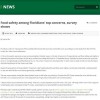 Wrapping up the Savvy Survey Series, this fact sheet is the last of three publications that outline procedures to follow after implementing a survey. With the surveys in, data collected, and analyses conducted, the next logical step deals with communicating the results. Through communication, ideas and thoughts are shared with others in a manner that will be easily understood. In Extension, some common communication channels include the annual Report of Accomplishment (ROA), grant project reports, abstracts, and oral presentations. This 5-page fact sheet was written by Milton G. Newberry, III, Jessica L. Gouldthorpe, and Glenn D. Israel, and published by the UF Department of Agricultural Education and Communication, September 2014.
Wrapping up the Savvy Survey Series, this fact sheet is the last of three publications that outline procedures to follow after implementing a survey. With the surveys in, data collected, and analyses conducted, the next logical step deals with communicating the results. Through communication, ideas and thoughts are shared with others in a manner that will be easily understood. In Extension, some common communication channels include the annual Report of Accomplishment (ROA), grant project reports, abstracts, and oral presentations. This 5-page fact sheet was written by Milton G. Newberry, III, Jessica L. Gouldthorpe, and Glenn D. Israel, and published by the UF Department of Agricultural Education and Communication, September 2014.
http://edis.ifas.ufl.edu/pd081
Setting Goals to Promote Academic and Personal Achievement
 Learners begin to envision their futures in both academic and personal settings even as children. The future that we develop motivates us to engage in learning environments, work experiences, and social encounters/settings. As instructors, we have the opportunity to help learners develop academic and personal goals that will develop and shape their future. This 3-page fact sheet assists instructors in developing their knowledge of goal theory, thereby allowing them to assist learners in utilizing their personal and academic goals to develop goal-directed achievement behaviors. Written by Eric D. Rubenstein and Andrew C. Thoron, and published by the UF Department of Agricultural Education and Communication, 2014.
Learners begin to envision their futures in both academic and personal settings even as children. The future that we develop motivates us to engage in learning environments, work experiences, and social encounters/settings. As instructors, we have the opportunity to help learners develop academic and personal goals that will develop and shape their future. This 3-page fact sheet assists instructors in developing their knowledge of goal theory, thereby allowing them to assist learners in utilizing their personal and academic goals to develop goal-directed achievement behaviors. Written by Eric D. Rubenstein and Andrew C. Thoron, and published by the UF Department of Agricultural Education and Communication, 2014.
http://edis.ifas.ufl.edu/wc166
The Savvy Survey #16: Data Analysis and Survey Results
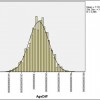 Continuing the Savvy Survey Series, this fact sheet is one of three focused on working with your survey data. In its most raw form, the data collected from surveys do not tell much of a story except who completed the survey, partially completed it, or did not respond at all. To truly interpret the data, it must be analyzed. Where does one begin the data analysis process? What computer program(s) can be used to analyze data? How should the data be analyzed? This publication serves to answer these questions. This 7-page fact sheet was written by Milton G. Newberry, III, Jessica L. Gouldthorpe, and Glenn D. Israel, and published by the UF Department of Agricultural Education and Communication, August 2014.
Continuing the Savvy Survey Series, this fact sheet is one of three focused on working with your survey data. In its most raw form, the data collected from surveys do not tell much of a story except who completed the survey, partially completed it, or did not respond at all. To truly interpret the data, it must be analyzed. Where does one begin the data analysis process? What computer program(s) can be used to analyze data? How should the data be analyzed? This publication serves to answer these questions. This 7-page fact sheet was written by Milton G. Newberry, III, Jessica L. Gouldthorpe, and Glenn D. Israel, and published by the UF Department of Agricultural Education and Communication, August 2014.
http://edis.ifas.ufl.edu/pd080
The Savvy Survey #15: Survey Responses and Data Entry
 This publication discusses the procedures for entering paper-based survey responses into an electronic database and preparing (or “cleaning”) all data, regardless of mode, for analysis. It also addresses data entry considerations for closed-ended questions (with response choices), partially-closed questions, and open-ended questions, since the types of questions used in the survey will also impact the data entry process.This 5-page fact sheet was written by Milton G. Newberry, III, Jessica L. Gouldthorpe, and Glenn D. Israel, and published by the UF Department of Agricultural Education and Communication, August 2014.
This publication discusses the procedures for entering paper-based survey responses into an electronic database and preparing (or “cleaning”) all data, regardless of mode, for analysis. It also addresses data entry considerations for closed-ended questions (with response choices), partially-closed questions, and open-ended questions, since the types of questions used in the survey will also impact the data entry process.This 5-page fact sheet was written by Milton G. Newberry, III, Jessica L. Gouldthorpe, and Glenn D. Israel, and published by the UF Department of Agricultural Education and Communication, August 2014.
http://edis.ifas.ufl.edu/pd079
Visualizing Spatially Based Data for Various Stakeholder Audiences
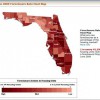 The work of Extension professionals is often to translate complex research findings into practical recommendations. One of the tools used for communicating with Extension audiences is visual representation of data. These visualizations include graphs, charts, and data overlaid onto maps. Just as text and words must be thoughtfully prepared for broad understanding, images should be adapted from the forms used with highly knowledgeable audiences. This 6-page fact sheet summarizes research in science communication and education that offers strategic ways for communicators to revise data visualizations for broad meaning-making. Written by Kathryn Stofer, and published by the UF Department of Agricultural Education and Communication, May 2014.
The work of Extension professionals is often to translate complex research findings into practical recommendations. One of the tools used for communicating with Extension audiences is visual representation of data. These visualizations include graphs, charts, and data overlaid onto maps. Just as text and words must be thoughtfully prepared for broad understanding, images should be adapted from the forms used with highly knowledgeable audiences. This 6-page fact sheet summarizes research in science communication and education that offers strategic ways for communicators to revise data visualizations for broad meaning-making. Written by Kathryn Stofer, and published by the UF Department of Agricultural Education and Communication, May 2014.
http://edis.ifas.ufl.edu/wc163
Identifying Key Community Leaders to Assess Extension Programming Needs
 Needs and assets assessments are a key task for Extension agents because they aid the development and delivery of research-based programs that address local needs. The purpose of this article is to describe the process of identifying key leaders to support an Extension agent’s needs assessment activities through interviews. This 4-page fact sheet was written by Laura A. (Sanagorski) Warner and Sebastian Galindo-Gonzalez, and published by the UF Department of Agricultural Education and Communication, May 2014.
Needs and assets assessments are a key task for Extension agents because they aid the development and delivery of research-based programs that address local needs. The purpose of this article is to describe the process of identifying key leaders to support an Extension agent’s needs assessment activities through interviews. This 4-page fact sheet was written by Laura A. (Sanagorski) Warner and Sebastian Galindo-Gonzalez, and published by the UF Department of Agricultural Education and Communication, May 2014.
http://edis.ifas.ufl.edu/wc164
Communicating with Extension Clients about Water
 As the U.S. and Florida populations continue to increase and the demand for fresh, clean water rises, water quality and quantity issues will become increasingly important. Extension faculty should understand public opinion surrounding water issues and identify the information that needs to be communicated to the public about water issues, as well as the best mode for this communication. This EDIS publication will provide an overview of how to communicate with Florida residents about water, including information about their preferred communication method and what topics surrounding water Florida residents find of interest. This publication will better equip Extension faculty to discuss water quantity and quality issues with Florida residents. This 4-page fact sheet was written by Caroline G. Roper and Alexa J. Lamm, and published by the UF Department of Agricultural Education and Communication, June 2014.
As the U.S. and Florida populations continue to increase and the demand for fresh, clean water rises, water quality and quantity issues will become increasingly important. Extension faculty should understand public opinion surrounding water issues and identify the information that needs to be communicated to the public about water issues, as well as the best mode for this communication. This EDIS publication will provide an overview of how to communicate with Florida residents about water, including information about their preferred communication method and what topics surrounding water Florida residents find of interest. This publication will better equip Extension faculty to discuss water quantity and quality issues with Florida residents. This 4-page fact sheet was written by Caroline G. Roper and Alexa J. Lamm, and published by the UF Department of Agricultural Education and Communication, June 2014.
http://edis.ifas.ufl.edu/wc165
Grant Writing: Tips and Advice for New Writers
 While grant writing is a highly useful and potentially lucrative skill, it can also be a challenge to learn how to successfully write grants. Moving through the entire process of creating and harnessing a new idea to building a collaborative team, and making sure the proposal itself is high quality and includes all the important pieces can be daunting for new grant writers. This 5-page fact sheet shares tips and walks you through the process of writing a collaborative grant by helping illuminate how to manage the idea creation, team building, and proposal writing stages of your grant writing experience. Written by Erica Odera, Sebastian Galindo-Gonzalez, Amy Harder, Glenn D. Israel, and Alexa J. Lamm, and published by the UF Department of Agricultural Education and Communication, May 2014.
While grant writing is a highly useful and potentially lucrative skill, it can also be a challenge to learn how to successfully write grants. Moving through the entire process of creating and harnessing a new idea to building a collaborative team, and making sure the proposal itself is high quality and includes all the important pieces can be daunting for new grant writers. This 5-page fact sheet shares tips and walks you through the process of writing a collaborative grant by helping illuminate how to manage the idea creation, team building, and proposal writing stages of your grant writing experience. Written by Erica Odera, Sebastian Galindo-Gonzalez, Amy Harder, Glenn D. Israel, and Alexa J. Lamm, and published by the UF Department of Agricultural Education and Communication, May 2014.
http://edis.ifas.ufl.edu/wc161
Planning for Effective Instruction
 Deciding what students need to know through the development of declarative objectives, deciding what students need to able to do through the development of procedural objectives, considering how to evaluate student learning, and planning meaningful learning experiences will allow for effective instructional planning. Following these basic steps will allow educators to determine the specific goals of the lesson, the course, or the program in order to effectively prepare students. This 4-page fact sheet was written by Sarah E. Burleson and Andrew C. Thoron, and published by the UF Department of Agricultural Education and Communication, April 2014.
Deciding what students need to know through the development of declarative objectives, deciding what students need to able to do through the development of procedural objectives, considering how to evaluate student learning, and planning meaningful learning experiences will allow for effective instructional planning. Following these basic steps will allow educators to determine the specific goals of the lesson, the course, or the program in order to effectively prepare students. This 4-page fact sheet was written by Sarah E. Burleson and Andrew C. Thoron, and published by the UF Department of Agricultural Education and Communication, April 2014.
http://edis.ifas.ufl.edu/wc160
Maslow's Hierarchy of Needs and Its Relation to Learning and Achievement
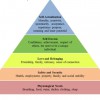 Learners in courses or training can be preoccupied. They worry about other courses, their home life, friends, extracurricular activities, physiological needs like food and sleep, and the list goes on. When learners are preoccupied with these concerns, learning and achievement are regularly put on the back burner. So how do we get our learners to focus on learning? Instructors can help learners satisfy needs, so the focus can be on content, learning, and achievement. This 3-page fact sheet was written by Sarah E. Burleson and Andrew C. Thoron, and published by the UF Department of Agricultural Education and Communication, April 2014.
Learners in courses or training can be preoccupied. They worry about other courses, their home life, friends, extracurricular activities, physiological needs like food and sleep, and the list goes on. When learners are preoccupied with these concerns, learning and achievement are regularly put on the back burner. So how do we get our learners to focus on learning? Instructors can help learners satisfy needs, so the focus can be on content, learning, and achievement. This 3-page fact sheet was written by Sarah E. Burleson and Andrew C. Thoron, and published by the UF Department of Agricultural Education and Communication, April 2014.
http://edis.ifas.ufl.edu/wc159
Using Social Norms to Increase Behavior Change in Sustainable Landscaping
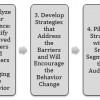 When Extension agents work to encourage behavioral changes in their community through educational programming, they may already be using some elements of social marketing. Extension educators can use an understanding of their clients’ reservations and inclinations toward a behavior, or their benefits and barriers, to develop strategies that encourage behavior change. Common strategies include prompts and reminders, incentives, and changing social norms. These strategies may be piloted on a small scale, modified if necessary, and then implemented on a large scale and further evaluated. This publication’s purpose is to describe the use of social norms as a social marketing strategy and make recommendations for applying social norms as a tool in Extension programming. This 5-page fact sheet was written by Laura Sanagorski and Paul Monaghan , and published by the UF Department of Agricultural Education and Communication, February 2014.
When Extension agents work to encourage behavioral changes in their community through educational programming, they may already be using some elements of social marketing. Extension educators can use an understanding of their clients’ reservations and inclinations toward a behavior, or their benefits and barriers, to develop strategies that encourage behavior change. Common strategies include prompts and reminders, incentives, and changing social norms. These strategies may be piloted on a small scale, modified if necessary, and then implemented on a large scale and further evaluated. This publication’s purpose is to describe the use of social norms as a social marketing strategy and make recommendations for applying social norms as a tool in Extension programming. This 5-page fact sheet was written by Laura Sanagorski and Paul Monaghan , and published by the UF Department of Agricultural Education and Communication, February 2014.
http://edis.ifas.ufl.edu/wc158
The Savvy Survey #11: Mail-Based Surveys
 As part of the Savvy Survey Series, this publication provides Extension faculty with an overview of the process that uses mail for sending and receiving questionnaires. Mail surveys can be an effective way to collect data for needs assessments in program planning or for follow-up surveys evaluating outcomes of Extension programs. Survey research consistently shows that mail surveys usually obtain as high or higher response rates than other methods. This fact sheet provides guidance for constructing the questionnaire, addressing visual design and formatting considerations, and implementing the survey. Extension faculty who incorporate best practices of questionnaire design and mail survey procedures will be able to achieve a high response rate and collect more useful data than those who don’t use these best practices. This 9-page fact sheet was written by Glenn D. Israel and Jessica L. Gouldthorpe, and published by the UF Department of Agricultural Education and Communication, October 2013.
As part of the Savvy Survey Series, this publication provides Extension faculty with an overview of the process that uses mail for sending and receiving questionnaires. Mail surveys can be an effective way to collect data for needs assessments in program planning or for follow-up surveys evaluating outcomes of Extension programs. Survey research consistently shows that mail surveys usually obtain as high or higher response rates than other methods. This fact sheet provides guidance for constructing the questionnaire, addressing visual design and formatting considerations, and implementing the survey. Extension faculty who incorporate best practices of questionnaire design and mail survey procedures will be able to achieve a high response rate and collect more useful data than those who don’t use these best practices. This 9-page fact sheet was written by Glenn D. Israel and Jessica L. Gouldthorpe, and published by the UF Department of Agricultural Education and Communication, October 2013.
http://edis.ifas.ufl.edu/pd071